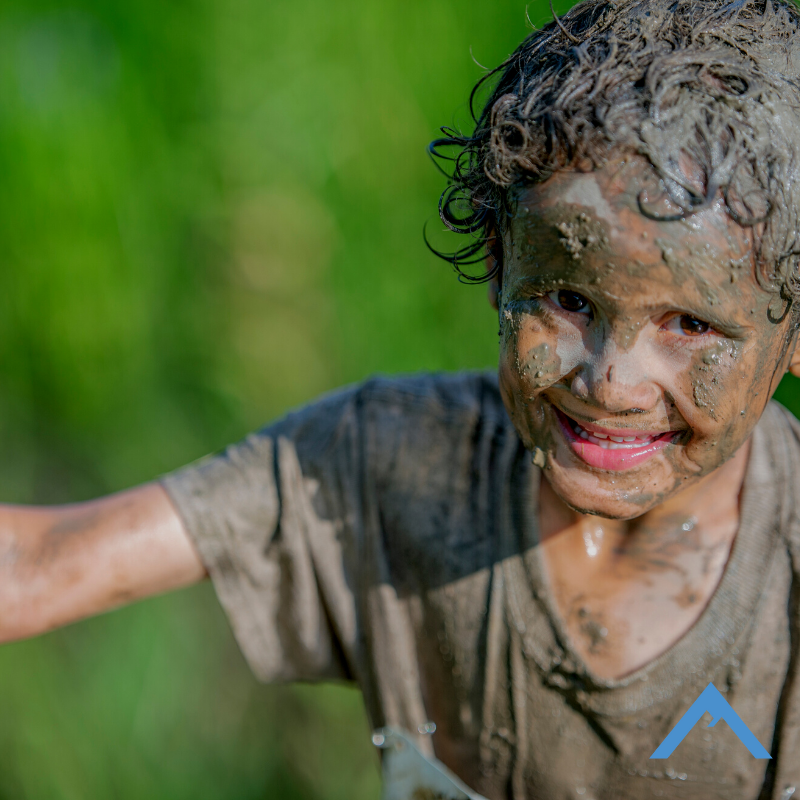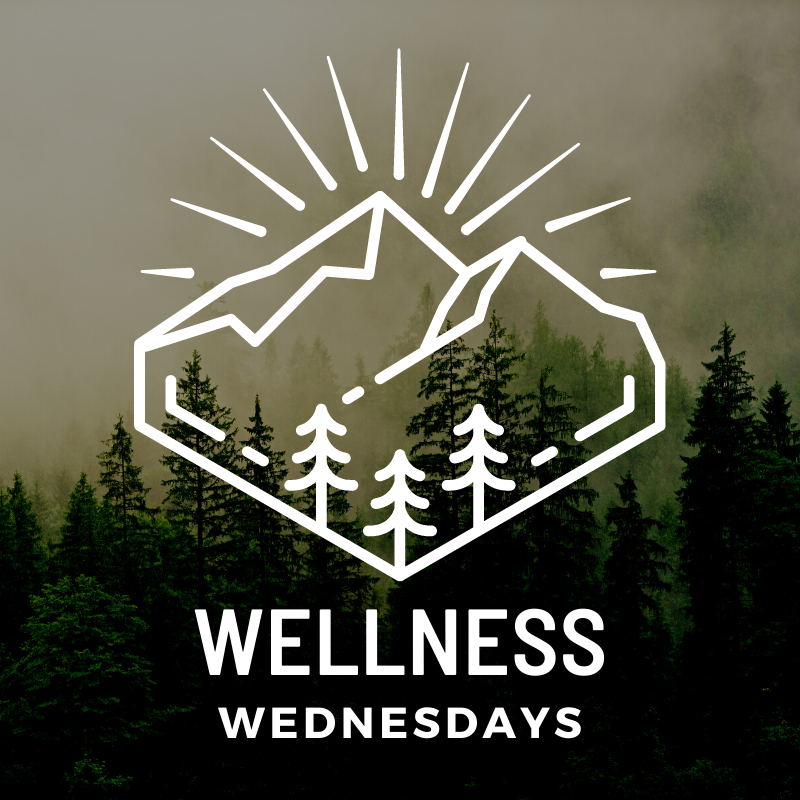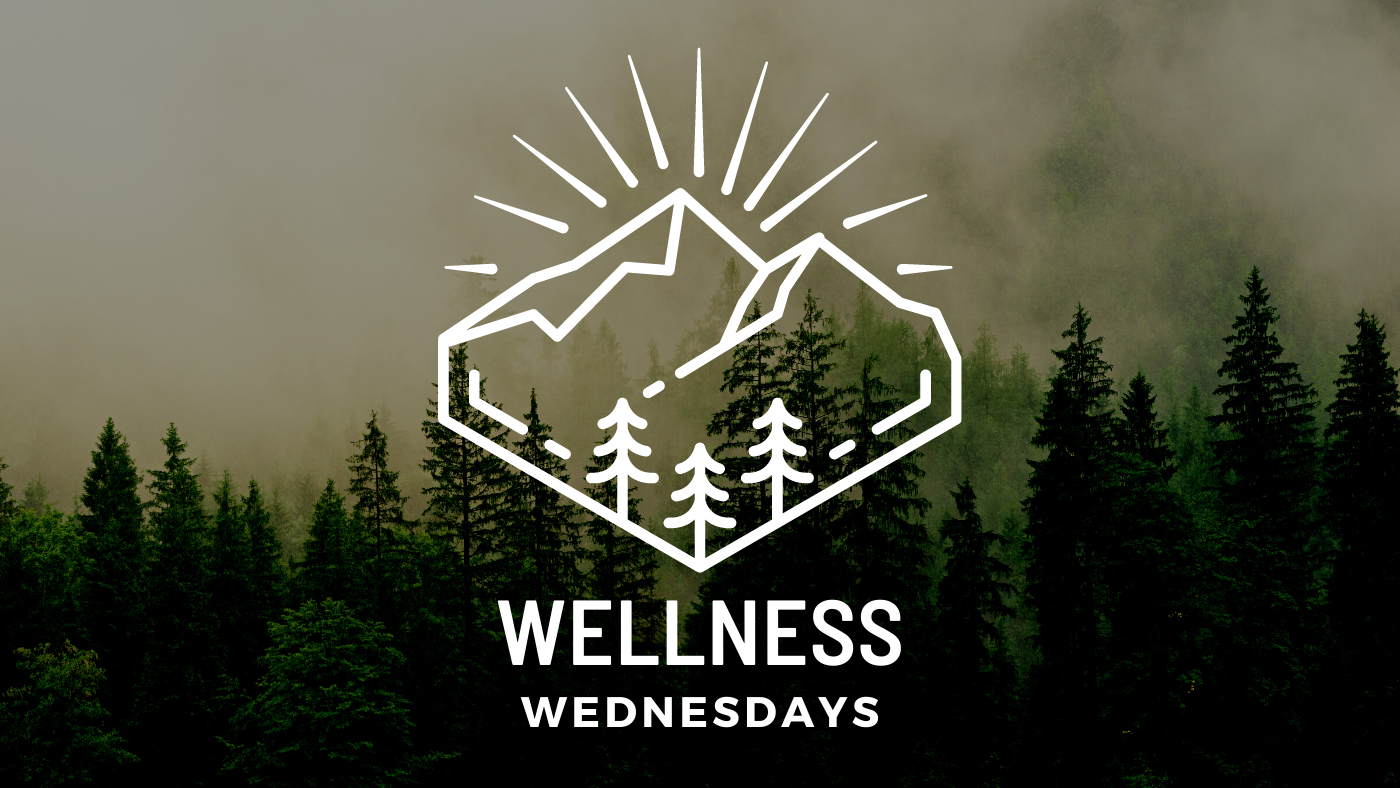When you were a kid did you play in the dirt? Make any mudpies? Did you ever taste it? Smell it? Wonder why it smelled different after a rain? Well playing with dirt as a kid had benefits that might make our great grandmothers smile while our mother’s cringed.
Benefits of Dirt
Researchers at the University of California School of Medicine, San Diego, found that a common bacterial species that lives on skin, Staphylococci, triggers a pathway that helps prevent inflammation, improving skin’s ability to heal.
“Don’t track mud in the house!” “Wash your hands before dinner!” “You can’t play with that, you don’t know where it’s been!” Parents wear those phrases out like old blue jeans put through the spin cycle too many times. Many have come to see D-I-R-T as a four-letter word. Only two decades ago, kids made forts with sticks and mud, waded up to their knees in streams. How many do that now? Fears about dangers lurking in the muck (microbes, parasites and amoebas, oh my!) and a societal slant in favor of oversanitization keep families from letting kids do what comes naturally, which is to go outside and get a little messy.
But here’s a dirty little secret: states Dr. Mary Ruebush, an immunologist, “Dirt and germs can actually be good for kids. The things small children want to do outside, like building mud castles, splashing around in puddles and rolling down hills until their clothes are irreparably grass-stained—all those things that make mothers reach for hand sanitizer and laundry detergent— may, in fact, be a grubby little prescription for health and happiness.”
Unfortunately, boys and girls today spend the better part of their time, seven hours per day on average (Rideout, 2010), indoors, in the sterile company of technology, rather than following their in-born impulses to explore the natural world with their senses. This indoor childhood is damaging to kids. In fact, in the last twenty years as kids spent less and less time outside, childhood obesity rates more than doubled (CDC, 2008), the United States became the largest consumer of ADHD medications in the world (Sax, 2000), 7.6 million U.S. children are vitamin D deficient (Kumar, 2000), and the use of antidepressants in pediatric patients rose sharply (Delate, 2004). When kids do leave the house, a growing body of research suggests the exact things we do in the name of protecting them from dirt and germs, such as not letting them get too messy and frequently using hand sanitizers and antibacterial products, can inhibit their mental and physical health and resilience.
According to Dr. Joel Weinstock, director of gastroenterology and hepatology at Tufts Medical Center in Boston, “Children raised in an ultraclean environment are not being exposed to organisms that help them develop appropriate immune regulatory circuits.” For their own benefit, Dr. Weinstock argues, For the Health of It Getting messy outside benefits the heart, skin, and immune system. “Children should go barefoot in the dirt, play in the dirt and not have to wash hands when they come in to eat.”
According to a four-year study that examined approximately two million children under the age of 18, antidepressant use is on the rise in kids, with the fastest growing segment found to be preschool children aged 0-5 years (Delate, 2004). While not a substitute for medication, an increasing number of experts are recognizing the role of nature in enhancing kids’ mental health. It’s easy to see the effect when you watch children play outside. Kids are different when they’re outdoors; free of school pressures and harried schedules, they relax and simply become kids. In fact, according to one study, children’s stress levels fall within minutes of seeing green spaces, making outside play a simple, no-cost, and timeefficient antidote for an overstressed child (Kuo, 2004). Studies now also show that going beyond seeing green spaces to touching them has a powerful and positive effect. Making direct contact with soil, whether through gardening, digging for worms, or making mud pies has been shown to improve mood, reduce anxiety, and facilitate learning. In a study by Bristol University, Mycobacterium vaccae, or M. vaccae, a “friendly” bacteria found in soil, was shown to activate a group of neurons that produce the brain chemical serotonin, enhancing feelings of well-being, much in the same manner as antidepressant drugs and exercise. Interest in the study arose when patients treated with M. vaccae for another health issue reported increases in their quality of life (Lowry, 2007).
For those of us that are no longer considered children, we can still benefit from getting dirty. Gardening is a great way for us to get back to Earth, and literally dig into her with our bare hands tending to our flowers, vegetables, and herbs. But what are some of the other benefits to gardening?
Gardening isn’t just about making your house look good (although a little curb appeal certainly never hurts). Caring for plants can also do wonders for your own wellbeing, an abundance of scientific research suggests. The physical exercise can contribute to a healthy weight and blood pressure levels, and just interacting with flora can improve your mood and mental health.
“Nature has a huge impact on health and wellness,” says Gwenn Fried, manager of Horticulture Therapy at NYU Langone’s Rusk Rehabilitation. “We know that people’s cortisol levels go down in a calm, green environment.”
Roll up your sleeves and get digging, planting, and weeding this spring and summer. Here’s how tending to your garden beds will benefit you in the long run:
Gardening burns a lot of calories.
Good news for those who already spend hours planting perennials: Gardening is considered moderate-intensity exercise. You can burn about 330 calories doing one hour of light gardening and yard work — more than walking at a moderate pace for the same amount of time — according to the Centers for Disease Control and Prevention (CDC).
Men and women who participated in a community gardening program also had significantly lower BMIs (body mass indexes) than their otherwise similar neighbors, according to a 2013 study in the American Journal of Public Health.
It can lower your blood pressure.
Just 30 minutes of moderate-level physical activity most days of the week can prevent and control high blood pressure. In fact, The National Heart, Lung, and Blood Institute recommends gardening or raking leaves for 30-45 minutes as examples of how to hit that recommended amount.
Spending time outside is good for your bones.
When you’re outdoors and your skin is exposed to the sun, it prompts your body to make vitamin D. This vitamin — also found in fish and fortified foods like milk — helps your body absorb calcium, a mineral essential for bone formation, according to the National Institutes of Health. (FYI: You should still apply sunscreen if you’re planning on spending more than a few minutes in the sun to lower your risk of skin cancer.)
Growing your own food can help you eat healthier.
Besides the physical exercise you’ll get tending to a vegetable garden, a productive plot can also promote a better diet by supplying fresh, healthy produce. The Dietary Guidelines recommends eating at least 2 cups of vegetables and 1½ cups of fruits per day to get necessary nutrients and reduce risk of chronic disease. However, only 1 in 10 Americans adults meet those recommendations, according to the CDC.
Gardening helps people develop a lasting habit of eating enough fruits and vegetables though, according to 2016 research from the University of Florida Institute of Food and Agricultural Sciences. This may work not only by providing fresh veggies but also making it more likely for children to try foods they may not have eaten before, research from the American Society for Horticultural Science theorizes.
Gardening can relieve stress.
Gardening is positively correlated with a reduction in depression and anxiety symptoms, according to a 2017 meta-analysis in Preventive Medicine Reports that looked at 22 different case studies.
In fact, some hospitals even use planting and flower arranging as a type of rehabilitation for people recovering from injuries, strokes, surgeries, and other conditions. NYU Langone’s horticultural therapy program helps patients rebuild both their physical and mental health, Fried says.
Not only does it give people control over a situation when they might feel helpless, but it also teaches them a new skill that can restore confidence. “They don’t really see a value in themselves because how they define themselves has changed, but being be able to take care of something is a good place to start,” she says.
These benefits can extend outside of a healthcare setting too. “People are so busy — there’s so much stress now with electronic media all over the place,” Fried says. “People need respite and nature provides respite.”
It can provide a source of community.
You don’t have to weed alone – nor should you. People who worked in allotment gardens had significantly better self-esteem, total mood disturbance, and general health compared to those who did not garden, according to a 2016 study published in Journal of Public Health. Even better, it’s something almost anyone can partake in. Fried runs a horticultural therapy group for Alzheimer’s patients as activity for them do with their caretakers and families.
Gardening can make you happier.
The act of growing plants may also help boost your mood. The 2017 meta-analysis also linked gardening with increases in quality of life and reductions in mood disturbance. This may have something to do with how it changes your outlook.
“The thing about gardening is that you have to have faith in the future,” Fried says. “Growing something green, something real, something alive, is a hopeful thing to do.”
Do you garden? What do you plant year-after-year? Do you have a community garden in your neighborhood? If not, would you consider developing a community garden?
Teaching kids about dirt, where their nutrient’s come from and how things grow help us develop healthier communities and enhance our overall wellness.
Living in Alaska in an area where it is hard for things to grow and thrive, my husband and I plant flowers ever year in baskets that are pollinator friendly. About 7 years ago we started beekeeping as a way to help our neighbors who have better luck at growing vegetables than we do, to pollinate their gardens, while we benefit from harvesting the honey and pollen. Beekeeping in and of itself has huge wellness benefits that I will share with you on another episode.
TASK
This week’s task is to get dirty! No matter when you’re listening to this podcast episode, get some seeds, some dirt, or take a class and learn how to care for succulents. Do something that gets your hands into soil.
Wellness Wednesday is brought to you by Peak Experience. Peak Experience is a company located in Alaska, servicing the entire Pacific Northwest and more. First and foremost we want to help you reach your goals. No goals are too small or too large. We know how to help you set up the right steps to get on that track and keep chugging away eventually reaching that original goal and beyond.
Remember to hit that subscribe button so you can listen every Wednesday.
I am Michele Forto for the Peak Experience Podcast on First Paw Media. See you next time.


Peak Experience is a nonprofit, independent podcast. We count on donations from you to do this important work.
Robert Forto leaddog@teamineka.com @robertforto
TJ Miller tjmiller@alaska.edu @tjmillerak
Michele Forto micheleforto@gmail.com @micheleforto
Peak Experience is a leadership podcast from Dreamchaser Leadership and First Paw Media. This reporting and production is funded in part by listeners just like you. Dreamchaser Leadership is a non-profit organization located in Alaska and is a (pending) 501(3)c.
Don’t miss our next podcast
Enter your email below to receive notifications of new episodes and more.

